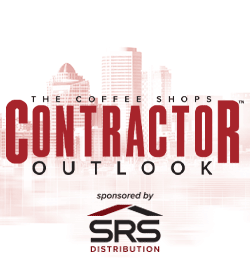7 Tips for Facing Material Management Challenges

RCS Influencer Wendy Marvin says that diversifying your suppliers and maintaining relationships is key to managing materials.
Material management has certainly changed a lot in the last 5 years. On the West Coast, we’ve gone from managing 3 price increases/year, to managing 3 in the first quarter. I’m sure it’s similar other places. As an industry we also face material shortages (whether due to weather events or manufacturing issues), and material limitations (color, etc). Our job is to make these “inconveniences” seamless to our customers. That involves clear communication with them, and unfortunately a higher level of management of our company.
Material and cost management is paramount to providing good customer service, but also to knowing the bottom-line net profitability of a job. Sometimes as “installers” we get trapped in “doing” and lose sight of managing. I believe the following tips can assist with these challenges.
-
Diversify suppliers: I know this can be argued, but in an unstable marketplace relying on a single supplier can be risky. The diversification of your sources ensures a consistent supply of materials.
-
Maintain relationships: This may seem counter intuitive after mentioning diversification; however, supplier and manufacturer relationships are key in any industry. Be the owner that assists when you can. Be the owner that doesn’t always shove liability to the supplier. Be a partner – and conduct yourself as such with any business relationship. This brings you information. You may hear things from the underground that gives early information about future business disruptions. You may be given consideration if an emergency arises in your business. You also can negotiate from a win-win standpoint, which is received better by suppliers.
-
Monitor market trends: Join associations like the National Roofing Contractors Association (NRCA) or your local/regional associations. Engage with other contractors to hear about trends from other regions. Involvement, even if it’s sitting at the bar at a industry trade event, will benefit you in the long run. Consider joining the National Association of Home Builders (NAHB) or other construction organizations that aren’t specific to roofing. I personally found a previously unknown supplier for plywood during the pandemic from a local building industry association event.
-
Inventory management: Effective inventory management is crucial to know your bottom line. You may choose to stock supplies in house, and you need a system for ingress and egress of those supplies to maintain accountability. You may choose to have all supplies delivered to the jobsite, but still have “leftovers” that come back from a jobsite post installation. Once delivered, and if inventoried, leftovers become free material for repairs and/or additional materials you can use on a major job. Create policies that instill thrifty handling of coil nails, etc. Only discard what you absolutely can’t use.
-
Price management: I cannot stress this enough – you MUST have a system for tracking price changes, dates of change and billing. In my small company over 10 years, I tracked and received reimbursement for over $300K of overcharges by my well intending suppliers. The truth is that all of us have new and undertrained employees working. When someone forgets to put your pricing into the correct tier, the result is an overcharge from your supplier. If you just blindly pay your bills when they come in, I guarantee you’ve paid more than you have to many times over.
Often our customers’ commitment to installation is weeks if not months. You must either inflate your material prices to cover any price increases that are implemented during this time, or you must have the language to pass these cost changes to your customer. Yes, a residential small roof may not be worth the customer dissatisfaction, however by having this language in place when a larger job has the same situation, you have coverage for altering the final invoice to reflect price changes. For any state with sales tax this also applies where the tax rate changes mid installation.
-
Customer engagement/education: Involve your customers at the onset of their contact with you in the conversation about our industry. Share what’s good, share what you struggle with for materials. Often a customer dead set on a certain material, will alter their decision based on facts and involvement. Share that you want their experience to be the best it can be, and by using material “x” you as the contractor could deliver that great experience. Still wanting something you have trouble procuring? Share the timelines and update them regularly so they understand this situation is out of your hands. Get their decisions in writing to allow you to redirect them to that decision should they become frustrated with you.
-
Embrace technology: Whether customer management, inventory management, installation or daily work, technology can create efficiencies in your work environment. Technology can give you drones bringing the ability to gather special photos and videos to share with customers or insurance. Technology can give you the ability to answer a customer call and treat them like an old friend acknowledging their previous work with you without their prompt. Technology will eventually offer industry disrupting ways to decrease our time on the roof, and early implementers will be able to pivot their business and practices to ensure longevity.
By adopting these best practices, you can position your roofing business to navigate the continued challenges of an ever-evolving economy while maintaining profitability and customer satisfaction.
Wendy Marvin is the CEO of Matrix Roofing. See her full bio here.





















Comments
Leave a Reply
Have an account? Login to leave a comment!
Sign In